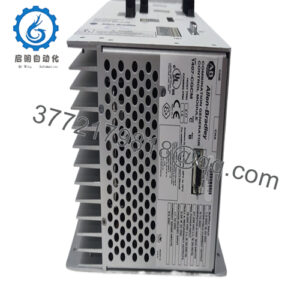Description
Product Model: GE VMIVME-017807-414001 / 350-0001007807-414001 D
Product Brand: GE / VMIC / GE Embedded Systems
Product Series: VMIVME-7807 VMEbus Single Board Computer
Product Features:
- Pentium M-based VME single-board computer in a passively cooled, single-slot VME format
- Supports DDR SDRAM (up to ~1.5 GB), CompactFlash boot, dual Gigabit Ethernet, and multiple I/O ports
- Rich peripheral interfaces: serial ports, USB, SATA, video (SVGA / DVI) for embedded control tasks
- Rugged design for industrial control, suitable for harsh environments (temperature, vibration, EMI)
- VMIVME-017807-414001 350-0001007807-414001 D
- VMIVME-017807-414001 350-0001007807-414001 D
Product Role & System Integration
The VMIVME-017807-414001—also commonly known as VMIVME-7807 or 350-0001007807-414001 D—serves as a VMEbus single-board computer (SBC) designed to function as the central computing node in industrial and embedded control systems.
In a VME-based control rack, this board typically occupies a single slot and connects directly to the VMEbus backplane, interfacing with I/O modules, communication boards, memory cards, and peripheral devices. Downstream, it interacts with sensors, actuators, interfaces, and submodules in tasks such as data acquisition, alarm processing, control loops, or supervisory tasks.
Because it’s built with a Pentium M architecture and supports modern interfaces, this module bridges legacy VME systems and more contemporary embedded computing requirements. In retrofit projects, engineers use VMIVME-017807-414001 to introduce additional computing power, network interfaces, or protocol support without dismantling the entire automation architecture.
Given its single-slot, passively cooled design, it integrates well into cabinets adjacent to other modules, enabling compact system designs. The board’s peripheral richness—serial, USB, SATA, video—allows it to act as both real-time controller and operations/diagnostics platform.
Applications & Industry Context
Within industrial control, there are many zones where a VMEbus SBC like VMIVME-017807-414001 is ideal:
- DCS / Process Control Systems — as a computational node coordinating logic, process historian, or network communication.
- Power Generation / Utilities — embedded controllers in turbine control, generator protection racks, or excitation systems.
- Oil & Gas / Petrochemical Plants — remote skid controllers that need field-level I/O, data buffering, and SCADA connectivity.
- Infrastructure & Transportation — the board’s resilience makes it suitable for utility substations, traffic control, or railway signaling.
- Test & Measurement / Lab Automation — the ability to run more complex software stacks while keeping deterministic behavior.
In many installations, the VMIVME-017807-414001 replaces older VME CPU modules or upgrades aging control racks. Because it incorporates modern interfaces like Gigabit Ethernet and SATA, it can offload tasks like local logging, image processing, or data compression, which older VME controllers could not handle efficiently.
In field postings and automation forums, you see surplus VMIVME-7807 / 017807-414001 boards being bought and sold, testament to their enduring utility in legacy systems.
Technical Features & Benefits
Let’s delve into the key strengths of VMIVME-017807-414001 / 350-0001007807-414001 D:
Processor & Memory
The board is built around a Pentium M CPU (commonly in the 1.1 GHz, 1.4 GHz, or 1.8 GHz variants) with up to 2 MB of L2 cache. It supports DDR SDRAM memory, reportedly up to ~1.5 GB, which enables substantial processing headroom for embedded tasks.
Storage & Boot Options
A bootable CompactFlash slot or internal flash media provision is part of the architecture, enabling stable system startup without mechanical drives.The board further supports SATA interfaces for connection to higher-capacity drives if needed, bridging embedded and conventional storage.
Networking & I/O
Dual Gigabit Ethernet interfaces are included, offering high throughput network connectivity for SCADA, redundancy, or diagnostic traffic. In addition, the board provides serial ports, USB, video (SVGA / DVI) ports, and likely other peripheral I/O (e.g. GPIO) to support a broad spectrum of embedded tasks.
VMEbus Integration
As a true VME SBC, the 017807-414001 board integrates fully with VMEbus backplanes (6U format, P0/P1/P2 connectors), enabling interaction with existing I/O, memory, interrupt lines, and slave/master roles within the VME architecture. It supports master/slave arbitration, VME interrupts, and the necessary address mapping to manage attached modules.
Rugged & Industrial Design
The VMIVME-017807-414001 is engineered for industrial usage: it’s built in a fully enclosed VME Eurocard format designed for passive cooling (i.e. no fan) and durable operation under vibration, EMI, temperature variation, and electrical noise. Its solid-state design and absence of moving parts help reliability in harsh installations.
Flexible OS / Software Support
Because of its PC-class architecture, this board often supports operating systems such as Linux, VxWorks, or possibly Windows CE / embedded variants, giving flexibility in application provisioning. This makes it easier to deploy modern software features like web services, data encryption, or remote management while maintaining real-time or deterministic functions.
A field note: in one utility retrofit, a team replaced an older VME CPU with the VMIVME-017807-414001 and offloaded event logging and packet encryption tasks to the board, freeing up other control modules and simplifying network architecture.
Technical Specifications Table
Below is a compiled table of known or widely cited specifications. Some values are inferred from vendor listings — always cross-check with the official GE datasheet before commitment.
| Parameter | Specification / Detail |
|---|---|
| Model / Part Number | VMIVME-017807-414001 / VMIVME-7807 / 350-0001007807-414001 D |
| Board Type | VMEbus Single Board Computer (6U Eurocard format) |
| Processor | Pentium M family (e.g. 1.1 GHz / 1.4 GHz / 1.8 GHz) |
| Cache | Up to 2 MB L2 cache (vendor listing) |
| Memory | DDR SDRAM, up to ~1.5 GB (spec listings) |
| Storage / Boot | CompactFlash (boot), SATA interface for drives |
| Networking | Dual Gigabit Ethernet ports |
| Peripheral I/O | USB ports, serial ports, video (SVGA / DVI) |
| VMEbus Support | Full VMEbus connection (P0/P1/P2), master/slave, interrupts, backplane interface |
| Cooling | Passive cooling (no fan) in VME slot configuration |
| Environmental Rating | Rugged industrial design, tolerant of vibration, EMI, etc. |
| Operating Systems | Supports embedded OS such as Linux, VxWorks, others |
| Certifications / Compliance | Industrial class board (specific certifications not publicly cited) |
| Availability / Condition | New and used units traded; one-year warranty often offered |
Installation & Maintenance Insights
From practical experience and published usage, here are tips for deploying and maintaining VMIVME-017807-414001 modules in real systems:
Slot Alignment & Backplane
- Ensure the VME chassis backplane is compliant (6U, proper signal length, backplane support).
- Insert the board firmly and evenly; avoid tilting or partial insertion that may damage connectors.
- Confirm that both P1/P2 connectors align fully with the backplane before securing the front panel to the rack.
Cooling & Thermal Management
- Though passively cooled, ensure adjacent boards or heat sources don’t block airflow.
- If mounted in enclosures, provide adequate ventilation or forced-air where ambient temperature can rise.
- Periodically monitor board temperature under load, especially in early commissioning.
Power & Noise Filtering
- Provide a stable DC supply (often ±5 V or other required rails) with low ripple.
- Use appropriate filtering for power lines and avoid coupling with high-noise busbars or induction loads.
Peripheral & Cable Routing
- Keep Ethernet, serial, and USB cables shielded and separated from power lines to reduce EMI coupling.
- For long runs, use proper twisted-pair and maintain consistent length to avoid timing skew in critical signals.
Firmware / BIOS / Boot Configuration
- Validate BIOS or firmware versions and update cautiously — always back up existing working firmware before updates.
- Set boot media order properly (e.g. CF first) to avoid confusion in deployment.
Diagnostics & Fault Monitoring
- Use on-board status LEDs (if available) to monitor network, CPU, or error states.
- Log diagnostic errors or memory faults over time — a rising count may signal degrading hardware.
- After deployment, run stress tests (CPU, memory, I/O) to validate stability under load.
Spare & Replacement Planning
- Maintain a spare VMIVME-017807-414001 / VMIVME-7807 board (same revision/firmware) in inventory.
- Pre-load the configuration, OS image, and diagnostics so replacement can be quick.
- In control systems with high availability demands, consider hot-swap architectures if supported.
Burn-In & Operational Validation
- Before deploying to production, run a burn-in period (hours to days) under full load and temperature cycling.
- Monitor for memory errors, bus faults, or thermal instabilities.
- Validate peripheral interfaces (Ethernet links, USB, serial ports, VME bus access) under real conditions.

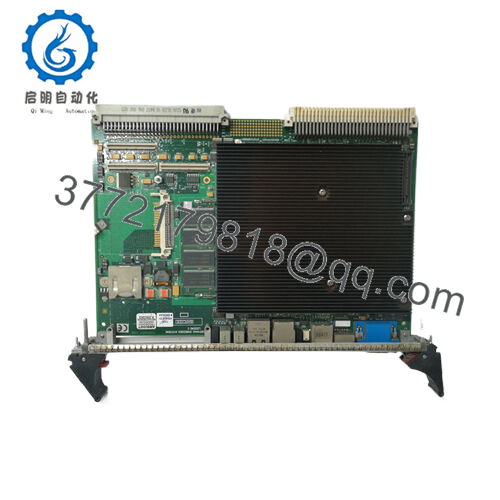
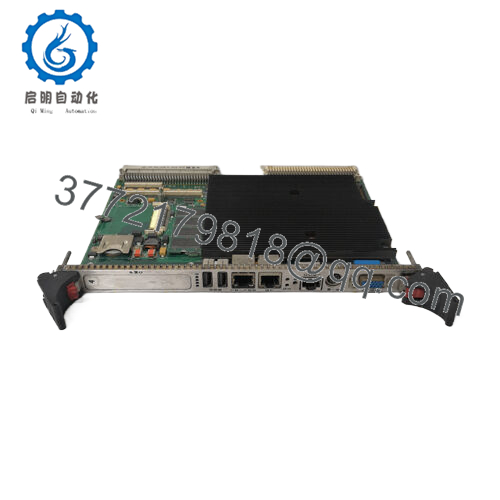
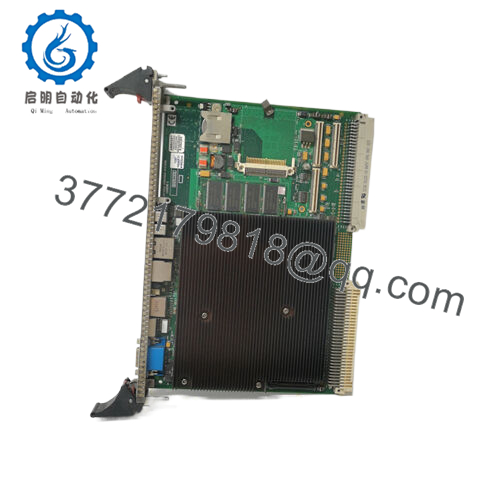
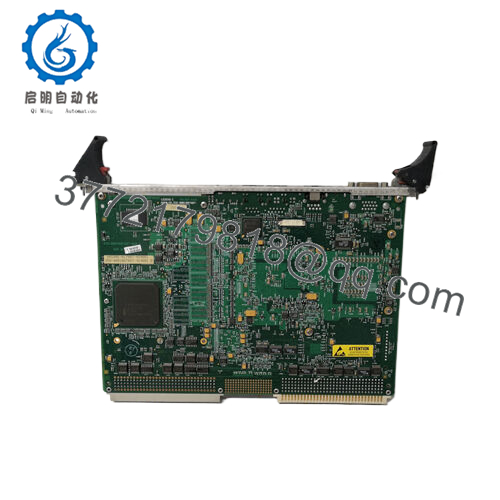
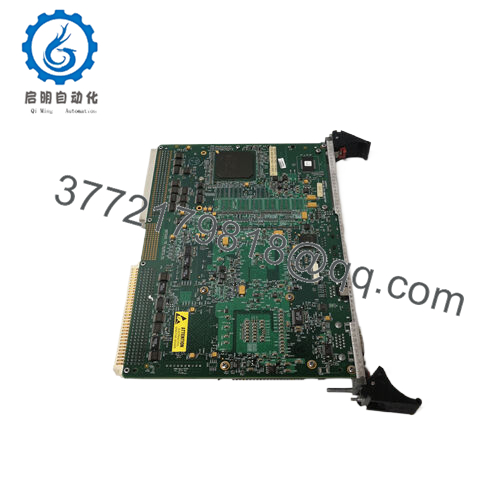
 WhatsApp: +86 16626708626
WhatsApp: +86 16626708626 Email:
Email:  Phone: +86 16626708626
Phone: +86 16626708626